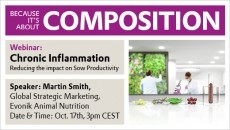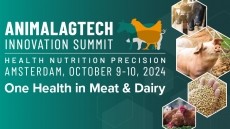Antibiotic alternatives, science platforms the focus in new feed additive tech tool

The company launched its feed science platform system earlier in October as a step in the process to provide more information and options for producers in Canada and the US, the company reported. The system relied on in house research for its design; it looks to highlight the synergies that can exist among products rather than focus on individual use.
Producers have to navigate current and upcoming legislation regarding the use of antibiotics in animal production, said Rob Patterson, technical director with Canadian Bio-Systems.
“There will be some early adopters that will ultimately be pulled to the technology site to learn about more options but then hopefully they’ll soon realize it’s more all-encompassing.”
Antibiotic-free production, or animals raised without antibiotics used to be a less common production practice, he said. However, with the start of the Veterinary Feed Directive (VFD) in the US and new regulations taking effect in December in Canada, some antibiotic products have had some use restriction added and many products have become prescription only.
“Maybe [we’ll] draw in those people looking for solutions for the antibiotic-free legislation and then stick around to learn about more of the ways they can help their production systems,” he added.
Generating a feed science fingerprint
The multi-platform system also was designed to provide information in a more streamlined manner for producers looking to address production challenges with poultry, swine, aquaculture and ruminants, said Patterson.
“What we were trying to do was focus the different technologies in a way that would be pretty straightforward to the marketplace and to producers,” he said. “As we drew the lines around the products it came pretty clear that we had those five groups.”
The feed science platforms are grouped around areas including multi-carbohydrase technology, enhanced yeast, grain management technology, functional fatty acids and phytogenics and probiotics, he said. However, the platforms are the first part of the process.
“There’s a website for the feed science platforms and as we roll out with this new way of thinking about what we do, we’re going to be coming up with the ability to go to that website and generate what we call the feed science fingerprint,” said Patterson.
Using the fingerprint generator, a producer would be able to input the type of production and the challenges or production parameters, he said. “The website will take those and say we recommend these three products out of those five groups that would help maximize the production system that you’re running,” he added.
It has taken about a year to develop the current portion of the system, he said. The next step is to launch the fingerprint system, which is anticipated to happen in early 2019.


















